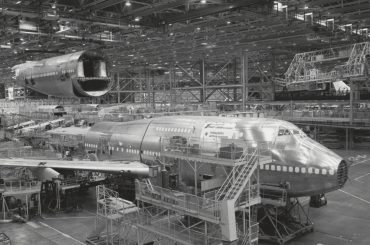 October 6 witnessed the passing of an era with the undertaking of the last spreading of superphosphate by a DHC-2 Beaver in Australia, writes Lenn Bayliss.
October 6 witnessed the passing of an era with the undertaking of the last spreading of superphosphate by a DHC-2 Beaver in Australia, writes Lenn Bayliss.
For some years the only Beaver that has carried out superphosphate spreading in Australia has been the Beaver VH-WOZ of Walcha Aerial Service. Owned by Barry Christie of Walcha, New South Wales, VH-WOZ operated from the birthplace of aerial superphosphate in Australia. It was here in 1950 that Tom Watson of Aerial Agriculture organised the first aerial spreading of superphosphate, carried out by a Tiger Moth VH-PCB. To this day Tiger Moth VH-PCB can be seen at the Walcha Historical Society Museum, a kind donation by Tom Watson and Aerial Agriculture Pty Ltd.
The advent of aerial spreading of superphosphate lead to significant increases in the number of sheep that could be carried per acre in the New England Tableland and increased wool yields. The disadvantage for the Tiger Moth was that it was operating at a comparatively high density altitude which limited its carrying capacity and performance.
Tom Watson identified the DHC-2 Beaver as the answer to the shortcomings of the Tiger Moth and eventually would be responsible for importing 69 Beavers into Australia, the second highest operator of Beavers in the World after the United States armed forces.
In October 1957 the first ‘Super’ Beaver, VH-AAI owned by Aerial Agriculture, demonstrated its capacity at the Walcha Field Day. A mechanical loader capable of picking up one tonne discharged the superphosphate into the hopper of the aircraft and the aircraft delivered 12 tonnes in one hour and 10 minutes. The era of the Beaver had arrived!
In New Zealand the Kiwis had stolen the march. Importing Beaver number 156 (1951 build) off the production line, ZK-AZB would become the first Fieldair Beaver (and the fourth New Zealand Beaver) to spread superphosphate in New Zealand. AZB’s first operational job was performed off Gisborne Aerodrome by Gerry Oman in March 1952. By chance and fate this Beaver would become the last to conduct aerial spreading in Australia.
Owned by Hallett Griffin of Griffin Ag-Air Ltd at Palmerston North, the historic AZB would be sold to Barry Christie of Walcha in 1998 and re-registered as VH-WOZ. Operated by Barry as Walcha Aerial Services, the aircraft had by 2009 become the sole operating Beaver in Australia with a hopper for the spreading of superphosphate.
By 2009 Barry had found increased efficiency in operations by flying a PAC Cresco capable of delivering 1.8 to 1.9 tonne per load, almost halving the time to complete a task by comparison with the Beaver.
After 52 years of super spreading operations in Australia, the last of the Super Beavers has been sold back to New Zealand. By no small chance it has been re-purchased by Hallett Griffin who will re-register it as ZK-AZB and operate it as a tribute to all the men and women of the New Zealand aerial ag industry. AZB will be repainted in its 1960s blue Fieldair colours and will grace the air show and re-union circuit. She is already booked to appear at the 60th anniversary reunion of Fieldair, scheduled for Gisborne NZ, on October 23-25 2010.
On Tuesday October 6, Barry Christie and Hallett Griffin met at Armidale, New South Wales. In Beaver VH-WOZ and Cresco VH-UFI they flew to Ian Lupton’s Clifton property near Guyra and in the New England birthplace region of aerial supering, where VH-WOZ delivered its last 20 tonnes of superphosphate.











